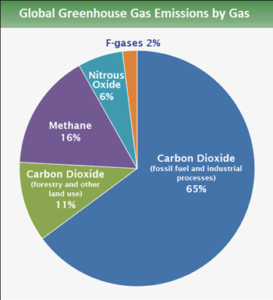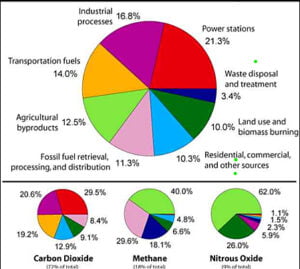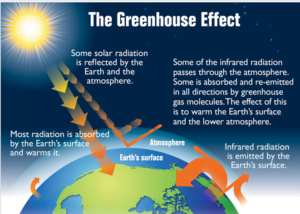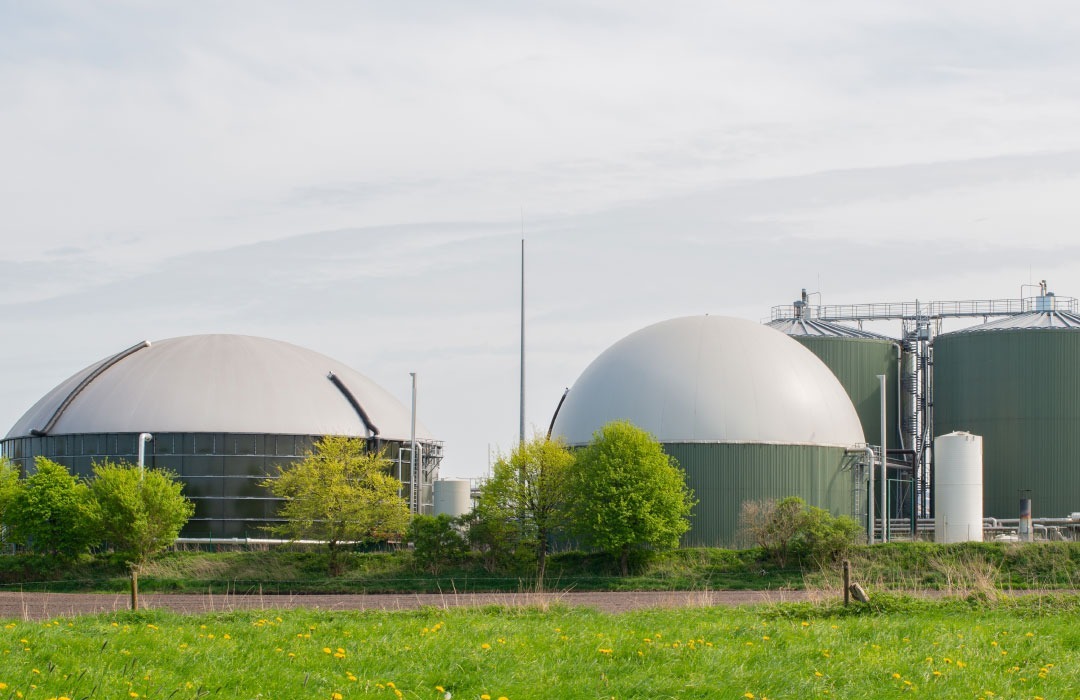Carbon neutrality doesn’t mean we are not going to have CO2 emissions. What it does mean is that between carbon abatement and carbon credits programs we will strive by 2050 to have net zero emissions. This places a critical role on both the reduction of the actual emissions but also the creation of carbon credits.
Background
Periodically it is useful to review where we are and understand we are on the trajectory that we wish to be on when we started our journey. The whole world of carbon credits and the restructuring of industry for decarbonization can be traced back to understanding the original drivers of the green change movement. Need to change was seen as coming from the so called “Greenhouse Effect”. The so-called greenhouse effect basically meant that particular ands in the air, including man-made and released gases were changing the atmosphere and not allowing heat to escape thus increasing the temperature of the planet.
Whilst many of the gases concerned with what we now call the greenhouse effect have existed in the atmosphere for nearly a million years what we know now is at the level has changed and that the rate of breakdown or reabsorption by the earth has not kept pace with our increased omission of these gases into the environment.
Introduction
There are five significant greenhouse gases are:
- Carbon Dioxide
- Methane
- Nitrous Oxide
- Fluorinated Gases
- Water Vapour
The critical issue then is how much and how have these gases heated our atmosphere.
Over 75% of the greenhouse effect is attributed to CO2 and therefore it’s not surprising that is the focus of attention. Whilst methane, nitrous oxide and fluorinated gases do have a significant contribution in their own right water is a secondary effect. The air’s ability to hold additional water vapour emerges from the additional heat and this has to affects the first is cloud which locked in heat and secondary the water vapour falling as rain and bringing with it to the ground other pollutants. (It is generally no counted in tables as it changes with the daily air temperature cycle but this has increased dramatically over the last century.)
Some 30 or perhaps 40 years ago what we considered green radicals, who called on their governments particularly noticeable for its impact on the so-called Black Forest near Essen in Germany) global focus and regulatory results have been directed at CO2.
Where does CO2 come form and why does it stay.
The rapid increase in CO2 in the environment comes from a mix of the burning of fossil fuels plus unsustainable agricultural practices including deforestation. In addition, much of the methane is attributed to cattle, beef and dairy and emerges from intensive agriculture plus the breakdown of manure. In short, manmade events reflecting the modern Western lifestyle in farming methods. Modern farming and forestry is associated with the creation of carbon sinks which seek to reverse the CO2 effect simply by absorbing it.
There have been several different approaches to managing CO2 the first is prohibition and the second
Carbon Neutral 2050 and targets before
Globally and in most countries, we have seen in and ongoing and increasing size of emissions of gases with the consequences of increasing the temperature of the earth. The argument has been won that this is not good for the planet and it must be addressed. Based on the Paris Accord and COP 26 targets have been set and agreed to see first the developed world and then the developing world move towards carbon neutrality.
What and where are carbon credits?
What is critical to understand is carbon neutrality doesn’t mean we are not going to have CO2 emissions. What it does mean is that between carbon abatement and carbon credits programs we will strive by 2050 to have net zero emissions. This places a critical role on both the reduction of the actual emissions but also the creation of carbon credits. The correlation is not the carbon credit should be cheap but rather they should be effective and of high quality to ensure that we are not adding on a nett basis to the carbon stored in the atmosphere. Once neutrality is achieved of course we will need to try to reduce the carbon in the environment. For most people living that will be a challenge for the next generation.
Economic Transfer
The creation and payment for carbon credits will not only occur within the advanced economies that expensive with a higher alternative value than say placing on in solar arrays. Carbon credits and offsets are being created by a wide range of projects and clearly this is the subject of a separate article. The projects aim over the long-term to provide offsets. In the international markets wealthier countries will pay for poorer countries to provide them with carbon offsets. But that is not only true of wealthy and poor countries. Nations such as Australia will be beneficiaries of their ability to produce large amounts of solar energy which in turn can be used to power industries and in particular make hydrogen which can be transferred as ammonia. Countries which cannot avoid the meeting some carbon dioxide and other gases will need to purchase credits generated domestically and increasingly from offshore.
What does this mean in practice.
The team at Projects RH a highly practical and have experience in such energy projects. They can see and are working on the opportunities of the future. Our activities include solar and bagasse projects which become economically viable because we know we can sell carbon credits. These carbon credits will be sold into international markets and prevailing prices which are expected to increase dramatically. Our focus has not been on providing carbon credits to domestic markets in the countries in which we operate as most of our associated investment into these projects comes with the request from the investors that internationally tradable carbon credits are created some investors do wish to have a share of the carbon credits generated as part of their investment.
We are also seeing and working with parties in the voluntary natural carbon credit market (VNCC).
Conclusion
Now we have a global economy with international standards plus international investment in the carbon credits will become increasingly important.
The object of this investment is to first stop the increase and then reduce the amount of greenhouse gases in the global environment. Whilst the journey has been long the early Greens have essentially impacted upon the way the world’s economy will be run and they have taught us the importance of reducing CO2 in the environment so as to maintain the earth’s temperature and avoid even further dramatic and cataclysmic impacts upon the world as we know it.
Whilst it is arguable that recent climatic swings are not attributable to changes in level of CO2 in the environment and that our weather has a natural cycle, what is not arguable is that the pollution, called emissions, is not in the global long-term interest. We do need a world with clean water and there available to all. It is important that all humanity has the right to share a clean planet.
Work on the carbon credits space is making a contribution to improving our world. Projects RH and our clients do feel good when we can point to our efforts in good projects which make available carbon credits but more importantly to those projects and achieve voluntary natural carbon credit status and can clearly demonstrate we have complied with the 17 Sustainable Development Goals (SDGs).under the UN Charter (see Appendix A)
By Paul Raftery – CEO, Projects RH, based in Sydney
————————-
Source: Denchak, M.; “Greenhouse Effect 101”, Natural Resources Defense Council, Dated 16th July, 2019, https://www.nrdc.org/stories/greenhouse-effect-101
—————————-
Appendix
The UN’s 17 sustainable development goals (SDGs) to transform our world[5]:
GOAL 1: No Poverty
GOAL 2: Zero Hunger
GOAL 3: Good Health and Well-being
OAL 4: Quality Education
GOAL 5: Gender Equality
OAL 6: Clean Water and Sanitation
GOAL 7: Affordable and Clean Energy
GOAL 8: Decent Work and Economic Growth
GOAL 9: Industry, Innovation and Infrastructure
GOAL 10: Reduced Inequality
GOAL 11: Sustainable Cities and Communities
GOAL 12: Responsible Consumption and Production
GOAL 13: Climate Action
GOAL 14: Life Below Water
GOAL 15: Life on Land
GOAL 16: Peace and Justice Strong Institutions
GOAL 17: Partnerships to achieve the Goal
————————————-
[1] Global Greenhouse Gas Emissions by Gas 2015, https://en.wikipedia.org/wiki/File:Global_Greenhouse_Gas_Emissions_by_Gas_2015.png
[2] Source: Denchak, M.; “Greenhouse Effect 101”, Natural Resources Defense Council, Dated 16th July, 2019, https://www.nrdc.org/stories/greenhouse-effect-101 viewed 01 October, 2022
[3] Greenhouse Gases, http://www.solarnavigator.net/greenhouse_gases.htm, viewed 01 October, 2022.
[4] University of Calgary, Energy Education, “Greenhouse effect” viewed 01-10-22 at https://energyeducation.ca/encyclopedia/Greenhouse_effect








